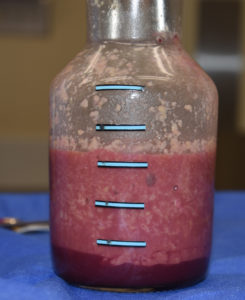Liposuction is one of the most common and recognized procedures in plastic surgery. By the way it looks in watching the procedure and how it is commonly perceived by the public, liposuction appears to be as simple as ‘sucking fat out’. But the reality is that it is a more complex extraction process than its name alone implies.
The obvious part of liposuction is the insertion of a hollow stainless steel cannula under the skin. Traditionally a back and forth motion of the cannula is done which essentially cuts tunnels through the fat layers often from multiple different directions. (known as cross tunneling) The cannula is attached by tubing to a vacuum pump which then pulls out the cut or loose fat as well as introduced and other bodily fluids.

This bubbling action in the collected fat aspirate occurs because of the vapor pressure of water. All liquids at any temperature exert a certain vapor pressure. This can be thought of at the point where liquid molecules are escaping into the vapor phase. This transition is highly influenced by temperature, the higher the temperature the more the molecules become active and can break free of their intermolecular bonds and escape into the atmosphere. (exceeding the atmospheric pressure pushing down on it). This is well known in water where at roughy 212 degrees F at sea level the vapor pressure is large enough that bubbles are formed.
This is where the influence of atmospheric pressure plays a critical role. At standard atmospheric pressure (1 atmosphere), water boils at 212 degrees F. In essence the vapor pressure of water at 212 degrees is 1 atmosphere. At higher elevations where the atmospheric temperature is lower, water boils at a lower temperature as there is not as much pressure on the liquid water as the water vapor reaches that pressure at a lower temperature.
The vacuum pump of liposuction creates a negative pressure in the collection cannister. The normal negative pressure setting is at least -20cm of water or – 1 atm. This will dramatically lower the boiling point of water or, thinking of it non-thermally, will allow the liquid water to escape into a gas. (bubbles) This is what is happening at a fluid temperature that is somewhere just below body temperature. The collected fat and fluid is truly boiling!
Dr. Barry Eppley
Indianapolis, Indiana


